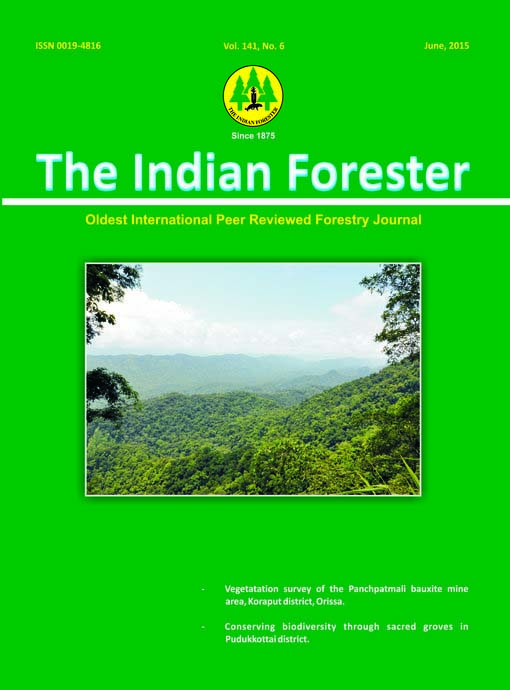Sacred Groves of Phulbani forest Division of Odisha: Socio Cultural Elements and Plant Biodiversity
DOI:
https://doi.org/10.36808/if/2015/v141i6/71324Keywords:
Sacred Grove, Biodiversity Conservation, Traditional Management Practices, Kondh Tribe.Abstract
The sacred groves in the Phulbani Forest Division of Odisha were studied to understand the richness of plant biodiversity and traditional socio cultural elements of the local people. Sampling method was adopted to study the biodiversity and growth of trees followed by a questionnaire survey in the sacred grove areas with special interaction with the VSS and sacred grove committee members. Most of the sacred groves were named after the deity dwelling in the respective sacred groves. Trees like sal (Shorea robusta) and rohini (Somida febrifusa) are worshipped in the sacred places by the local people of the area. Apart from common festivals, Mati Yagna and Indra Yagna are also celebrated in the sacred grove areas of this division to obtain a good harvest and timely rain. It was found that various traditional customs associated with sacred groves were in practice by the Kondh tribe. From the sampling enumeration, it was confirmed that the sacred groves were rich in plant genetic diversity and were composed of many medicinally useful species, wild edible fruits, fodder, fuel wood and timber yielding species. The Shannon Weiner Index of individual sacred groves was calculated for knowing the weightage of species by their frequencies.References
Basu R. (2000). Studies on Sacred Groves and Taboos in Purulia District of West Bengal. Indian Forester, 126: 1309–1317.
Boraiah K.T., Vasudeva R., Shonil A.B. and Kushalapa C.G. (2003). Do informally managed sacred groves have higher richness and regeneration of medicinal plants than state-managed reserve forests? Current Science, 84: 804–808.
Gadgil M. and Vartak (1974). V. D. The Sacred Groves of Western Ghats in India. Economic Botany, 30: 152-160.
Khumbongmayum Asalata Devi., Khan M.L and Tripathy R.S. (2005). Sacred groves of Manipur, North East India: biodiversity value, status and strategies for their conservation. Biodiversity and Conservation, 14: 1541-1582.
Tiwari B.K., Barik S.K. and Tripathi R.S. (1998). Biodiversity value, status and strategies forconservation of sacred groves of Meghalaya. India. Ecosystem Health, 4: 20–32.
Yadav S., Arya V. and Panghal M. ( 2010). Sacred groves in conservation of plant biodiversity in Mahendergarh district of Haryana. Indian Journal of Traditional Knowledge, 9(4): 693-700.
Downloads
Downloads
Published
How to Cite
Issue
Section
License
Unless otherwise stated, copyright or similar rights in all materials presented on the site, including graphical images, are owned by Indian Forester.





